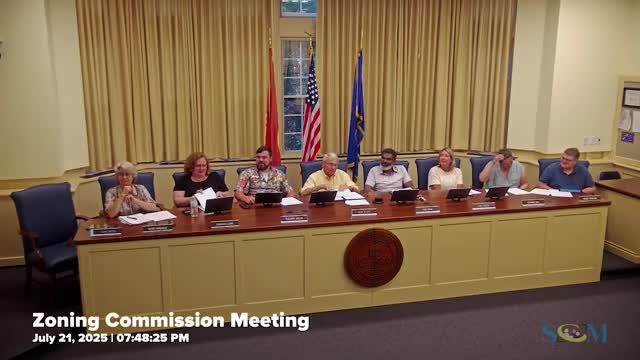Simsbury Conservation Commission Introduces Draft Dark Sky Lighting Regulations
July 24, 2025 | Simsbury Center, Capitol County, Connecticut
This article was created by AI summarizing key points discussed. AI makes mistakes, so for full details and context, please refer to the video of the full meeting. Please report any errors so we can fix them. Report an error »

The Zoning Commission meeting held on July 21, 2025, in Simsbury, Connecticut, focused primarily on the introduction and discussion of new lighting regulations aimed at reducing light pollution and promoting energy efficiency. The proposed draft, developed collaboratively by Britney and Marjorie Winters, chairwoman of the Conservation Commission, has been in the works for approximately six months.
The draft regulations are designed to incorporate dark sky zoning principles, which align with the town's 2024 Plan of Conservation and Development (POCD). Key features of the proposed regulations include the use of shielded fixtures that direct light downward, restrictions on brightness at property lines, and guidelines for color temperature to favor warmer tones over harsher, cooler LED lights. Additionally, the regulations suggest the use of timing controls, such as motion sensors, to limit unnecessary lighting during late hours.
The new lighting regulations will be integrated into the existing Simsbury zoning codes, including the Simsbury Center Code and the Simsbury Form-Based Code. However, it was clarified that these regulations will only apply to new site plans and amendments that involve changes to lighting; existing lighting will not be affected and will be classified as nonconforming under the new rules.
The discussion also touched on the challenges of enforcing these regulations on residential properties, as the commission does not review individual house plans. While some towns, like Newtown and Stamford, have implemented similar rules for residential areas, the Simsbury Commission expressed concerns about potential pushback from homeowners if enforcement were attempted.
To facilitate the transition to dark sky-friendly practices, the commission plans to engage in educational outreach, including providing information to homeowners associations and making resources available on the town's website. The commission is also considering gathering feedback from other towns regarding the implementation of these regulations and their associated costs.
Next steps include a work session scheduled for September, where the commission will further refine the draft regulations and prepare for a public hearing to solicit community input. The meeting concluded with a commitment to ensure that the proposed regulations align with the town's goals of becoming a dark sky-friendly community while balancing the needs of residents and developers.
The draft regulations are designed to incorporate dark sky zoning principles, which align with the town's 2024 Plan of Conservation and Development (POCD). Key features of the proposed regulations include the use of shielded fixtures that direct light downward, restrictions on brightness at property lines, and guidelines for color temperature to favor warmer tones over harsher, cooler LED lights. Additionally, the regulations suggest the use of timing controls, such as motion sensors, to limit unnecessary lighting during late hours.
The new lighting regulations will be integrated into the existing Simsbury zoning codes, including the Simsbury Center Code and the Simsbury Form-Based Code. However, it was clarified that these regulations will only apply to new site plans and amendments that involve changes to lighting; existing lighting will not be affected and will be classified as nonconforming under the new rules.
The discussion also touched on the challenges of enforcing these regulations on residential properties, as the commission does not review individual house plans. While some towns, like Newtown and Stamford, have implemented similar rules for residential areas, the Simsbury Commission expressed concerns about potential pushback from homeowners if enforcement were attempted.
To facilitate the transition to dark sky-friendly practices, the commission plans to engage in educational outreach, including providing information to homeowners associations and making resources available on the town's website. The commission is also considering gathering feedback from other towns regarding the implementation of these regulations and their associated costs.
Next steps include a work session scheduled for September, where the commission will further refine the draft regulations and prepare for a public hearing to solicit community input. The meeting concluded with a commitment to ensure that the proposed regulations align with the town's goals of becoming a dark sky-friendly community while balancing the needs of residents and developers.
View full meeting
This article is based on a recent meeting—watch the full video and explore the complete transcript for deeper insights into the discussion.
View full meeting
